Want an alternative to bifolding doors for a new extension? There are many other ways of creating a wall of glass connecting your home to your garden in summer and creating a bright interior in the winter. Alternatives to bifolding doors include sliding doors, slide-and-stack doors, pivot doors and even pocket doors.
In this article, we present all the possible options available as credible alternatives to bifolding doors which can also be installed to replace dated patio doors in existing openings.
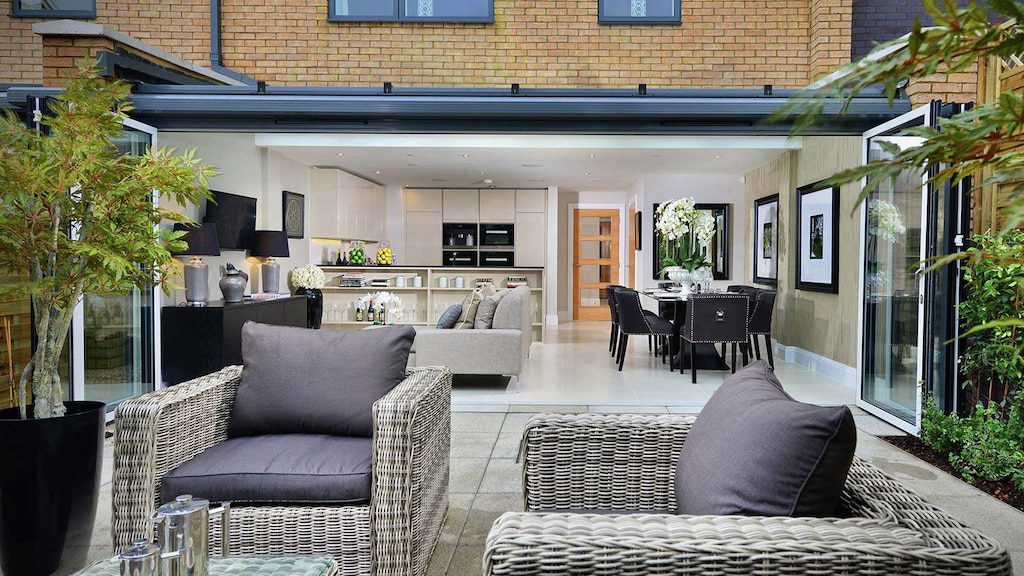
Five reasons for considering alternatives to bifolding doors
As popular and as good as bifolding doors are, there are five main reasons people do not want them. These are:
- When closed, bifolds have too many vertical mullions and panels interrupting the view.
- You prefer the larger glass panels with a minimalist, more slimline aesthetic.
- Bifolds take up too much space when folded back.
- When bifolds are fully open, insects (and even birds) fly into your home, and when it’s windy, dust and garden debris blow in.
- You want something with a more straightforward operation and/or more features, such as automation.
Other reasons why bifolds may not be suitable are because you have a small door opening and can only fit a two-panel door, which isn’t the most functional. Or perhaps planning restricts the types of products you’re allowed.
Understanding what you want from your patio doors
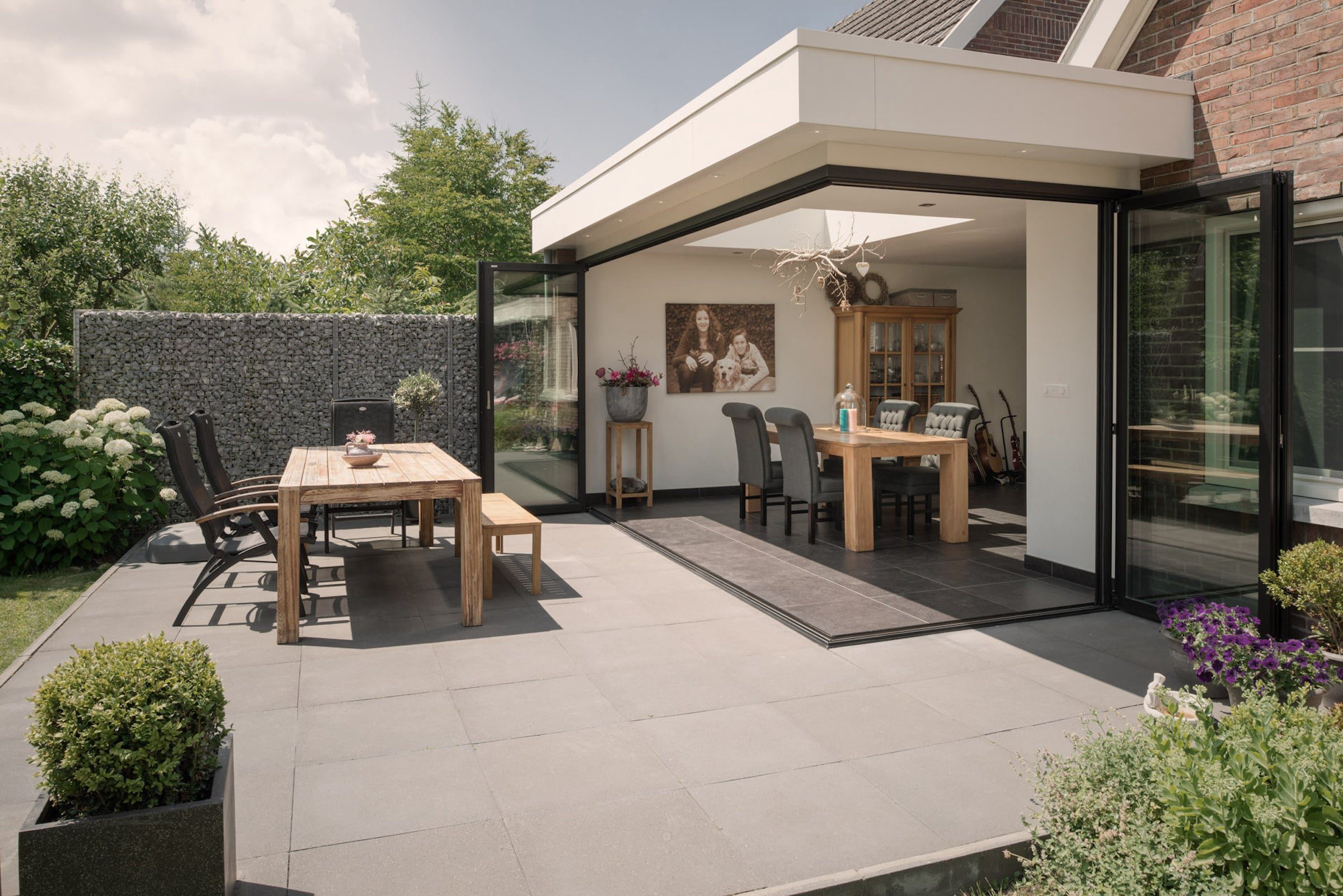
One reason for the popularity of aluminium patio doors, whatever the type, is the lifestyle options they meet. At the top of the list in the warmer summer months, we like to consider al fresco dining and opening up the back doors to create a seamless transition to the garden. Moreover, our patio doors stay closed for most of the year.
Entertainment or dining, children enjoying the seamless link to indoors and outdoors, and striving for a better open lifestyle are all genuine reasons for choosing the best patio doors to meet your needs at the end of a property renovation project.
For other people, it’s about making the most of what they have already. Perhaps you have a countryside home in a private setting, or you have stunning sea, countryside or hill views. In this instance you want to the patio door type that makes the most of the view when closed as well as open. Others may have a smaller home and want their doors to help maximise the space or create an illusion of a bigger space. Or it’s simply a case of making a brighter and lighter room.
What most other patio doors provide that’s the same as bifolding doors
There are some features of a bifolding door many people still want from a new patio door regardless of the type.
A low or flush threshold
Whether it’s for easy access or a better look, getting a low level threshold, which is when you have a flush or very small ramp between the inside and outside, is an option with other types of doors as well as bifolding doors.
Slimmer or reduced sightlines
Undoubtedly, the thinner door frames and sightlines are one of the most popular choices. Slimmer profiles mean larger glass sizes, leading to more light and better views. Slim aluminium profiles aren’t available with every alternative to a bifolding door, still, some great options exist, including fully frameless doors, as shown below.
Better energy-efficiency
Saving money on heating bills is also important when investing in new glazing. Thanks to insulated aluminium profiles and high-specification glass, all alternatives to bifolding doors for new extensions come with excellent U-Values and energy-efficiency.
The alternatives to bifolding doors in aluminium
We have put together a selection of door types and styles that can work very well as patio door replacements or as part of a new extension. All these can offer great views, large glass panels, and open up space from the inside to the outside. Some of these even give you bifold functionality but eliminate some other features you may not like about bifolds.
Why you may want to consider French Doors as alternatives to bifolding doors
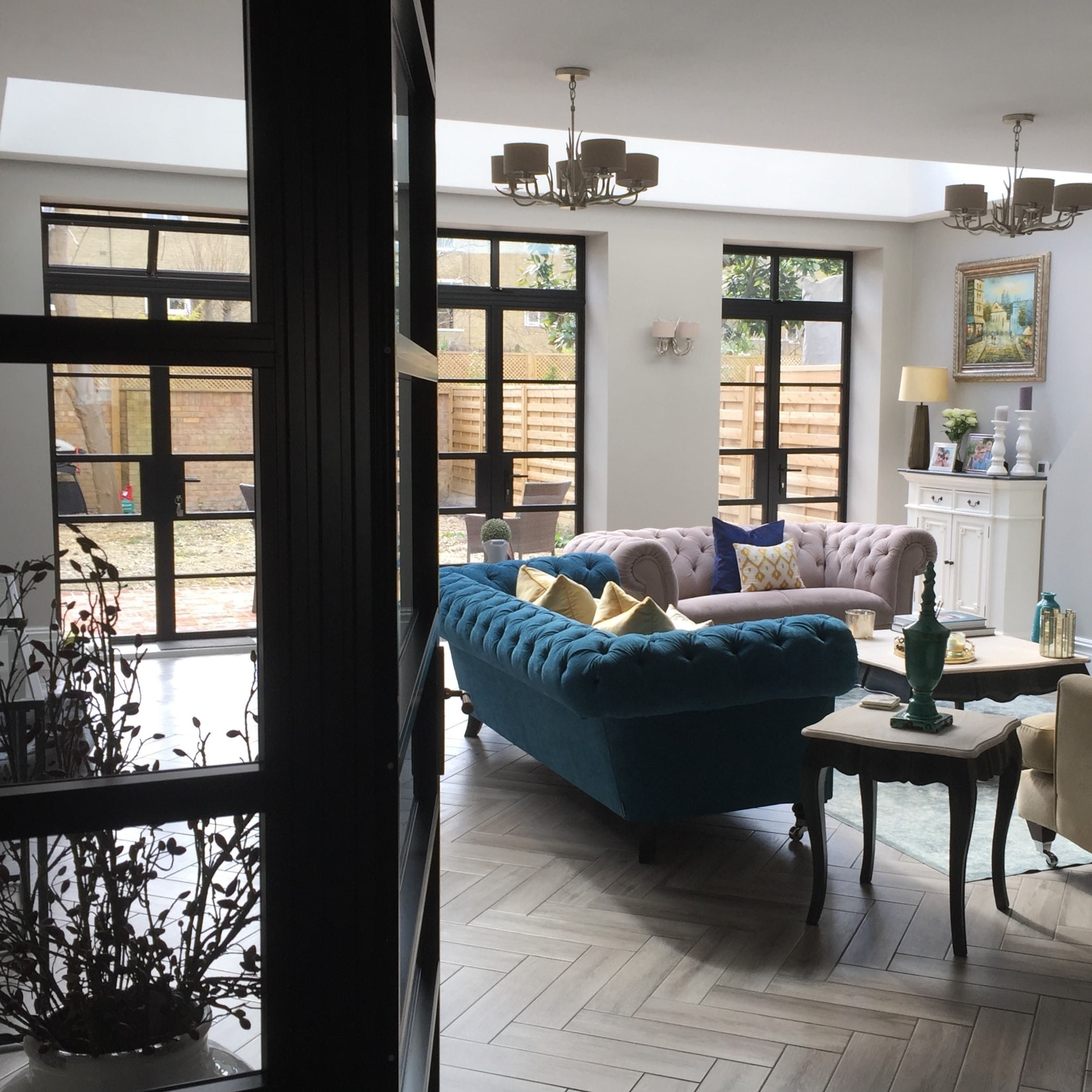
The French door remains one of the most affordable solutions as alternatives to bifolding doors. These doors start as simply two doors going up to multiple connected door sets for larger walls and have the largest product brand choices. French doors also come in the highly desirable steel look style, and are undoubtedly the best product for Art Deco, Heritage or industrial black steel look doors.
Sliding doors with large glass panels as alternatives to bifolding doors
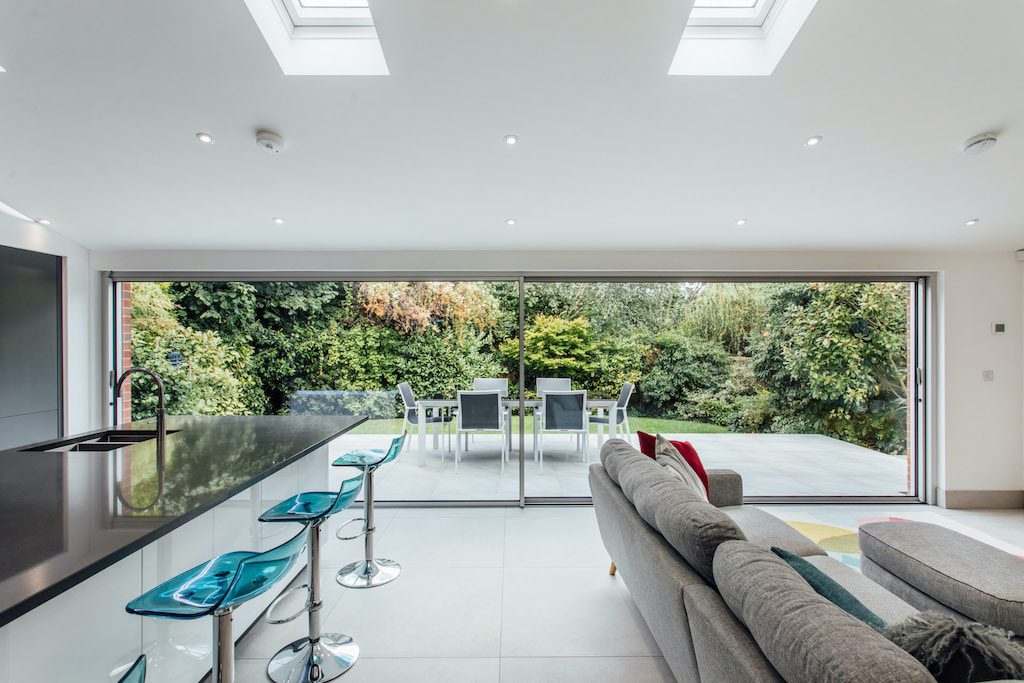
Nothing creates a feeling of space like a grand slider compared to bifolding and French doors. We think sliding doors are one of your best alternatives to bifolding doors for a new extension or replacing dated patio doors.
The sliding door is the only product delivering the largest possible glass sizes. Even if it’s a standard-size door, the glass panels are still larger than bifold door panels. With the doors closed, the frame profiles are more than half the size of a bifold.
The only downside of sliding doors is that they do not give you the whole opening like a bifold when open. Still, the benefits when these doors are closed are a wall of insulated glass and the best views.
Ultra-slim sliding doors for minimal frame lines as alternatives to bifolding doors

Even slimmer than standard patio sliding doors are ultra-slim and minimal patio doors. These are one of the most popular alternatives to bifolding doors, delivering the bare minimum of aluminium and the most glass. They’re complex to make and install, but the end result is quite special.
Slide and stack doors OR slide and turn doors as alternatives to bifolding doors
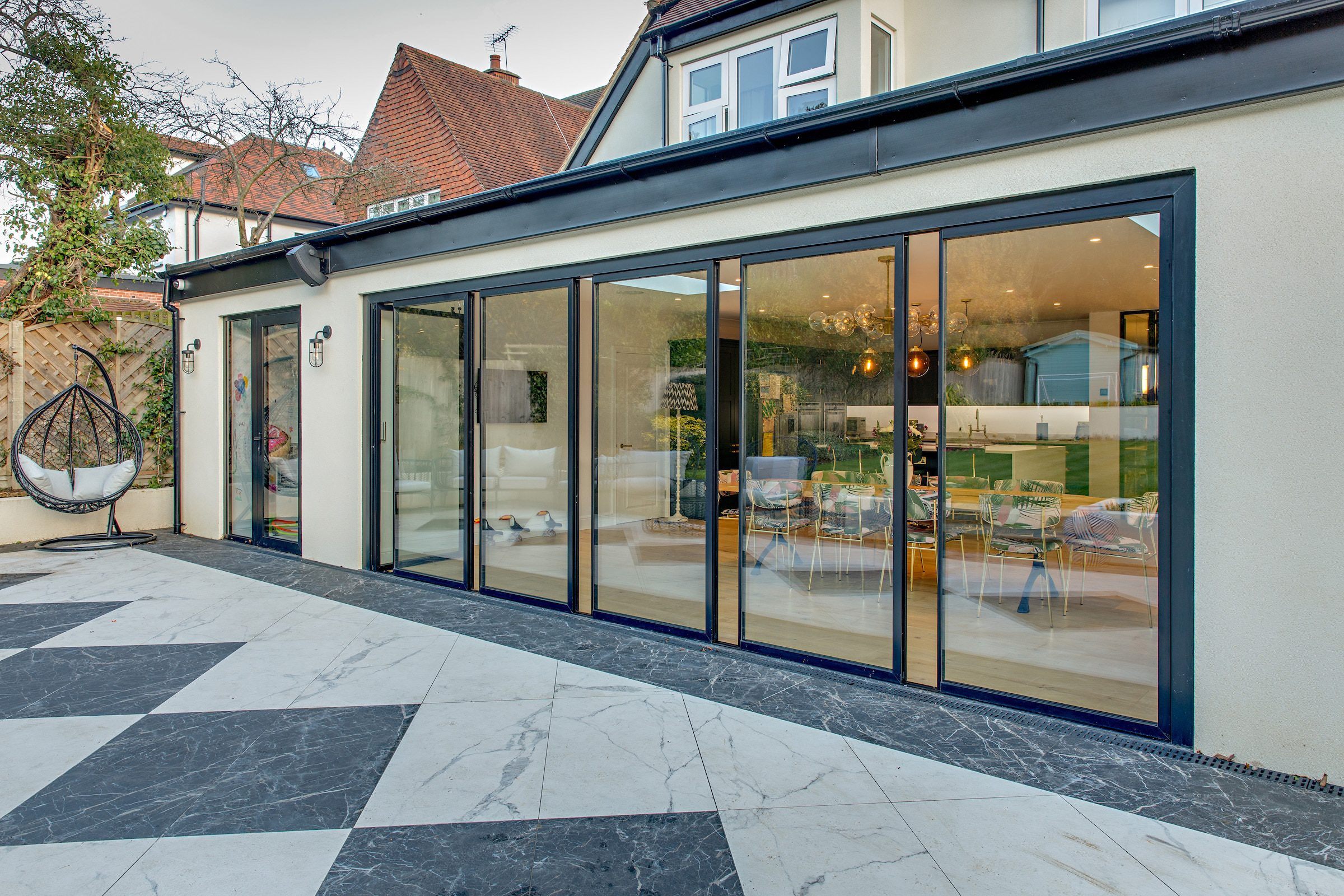
There are several reasons why we recommend slide-and-stack doors as alternatives to bifolding doors. First of all, you get the same fully open aperture of a bifold. However, the doors move as independent panels rather than concertina doors connected together.
The slide-and-stack or slide-and-turn design still requires your doors to stack in one place so you need space to do this, either inside the room or outside on the patio. However, the independent panels let you place furniture right up to the doors, either inside or out. The doors move along the track then fold inwards right at the end.
As the image shows, they’re space-saving, provide ventilation gaps between the doors, and generally come with thinner sightlines than regular bifolds.
The frameless slide and turn doors as alternatives to bifolding doors
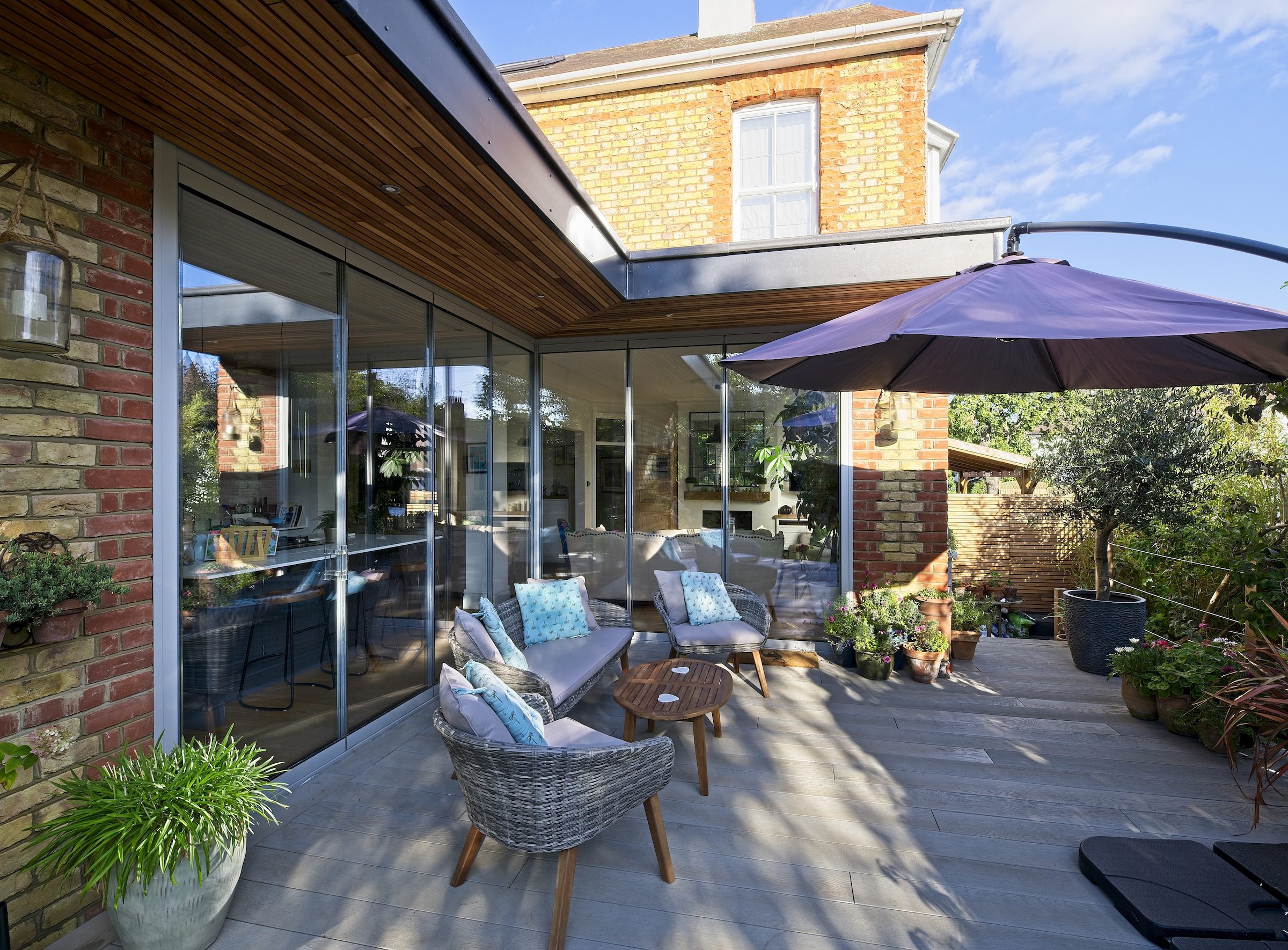
Even more exclusive than the framed slide-and-stack door is the frameless version. Frameless Glass Curtains Limited (FGC) provide double-glazed slide and stack doors with no aluminium at the mullions and, as a result, no visible mullions. Even the glass units have a transparent edge.
The doors connect with a sophisticated gasket and a sightline as small as a finger. Despite their frameless design at the mullions, they come with all the security and weather protection you need from your new patio doors. FGC’s doors are top-end and not the cheapest but the look they deliver is altogether different. There’s also a single-glazed internal version for room dividers and partitions.
Aluminium pivot doors as alternatives to bifolding doors
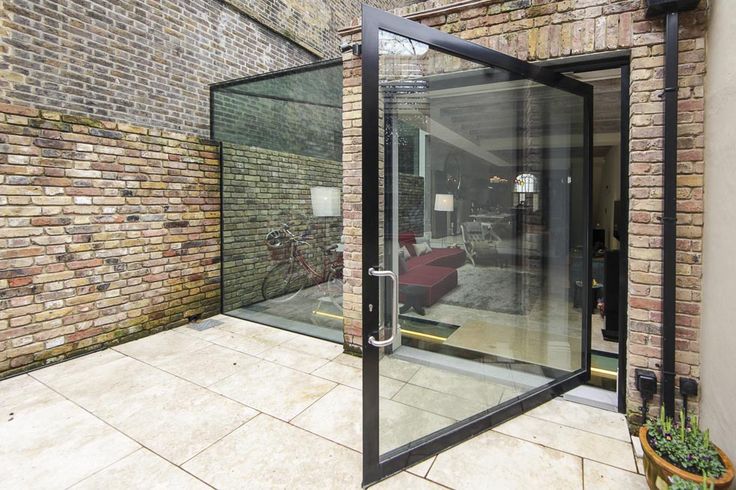
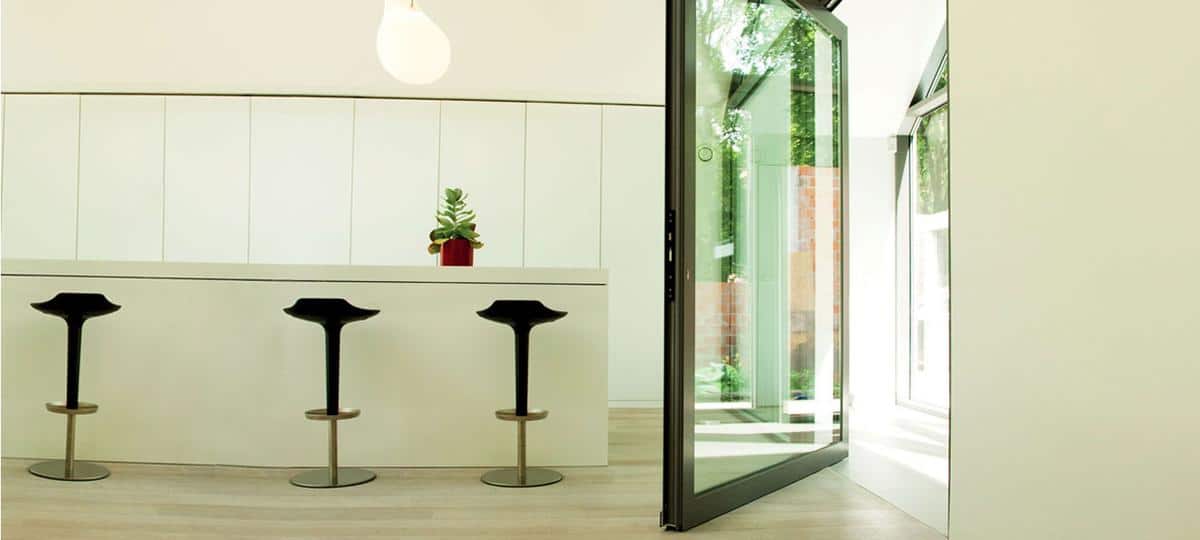
Aluminium pivot doors can be made in sizes substantially wider and taller than standard hinged doors. With sizes up to 3 metres in width and height possible just from one door, nothing makes a more dramatic statement than a door of this magnitude and stature. You can choose any size door, but a sizeable single swing pivot door offers something very different from the norm, including the most light and, when open, a large clear opening.
Pivot doors are set upon a floor spring at the bottom and a top hinge, enabling even heavy doors to open easily. Owing to their offset nature, pivot doors will encroach significantly on the inside and outside space when opened. However, for a real wow factor, they cannot be beaten. They are exceptional.
The only consideration with a pivot door is that due to the way it opens, it does not have the weatherproof characteristics of a conventional door with a rebated frame all around. As a result, pivot doors are better in more sheltered locations.
It is a very well-designed aluminium door with a weighted and positive feel. Although they’re not for everyone, they are a highly contemporary alternative to bifolding doors.
Pocket sliding doors as alternatives to bifolding doors
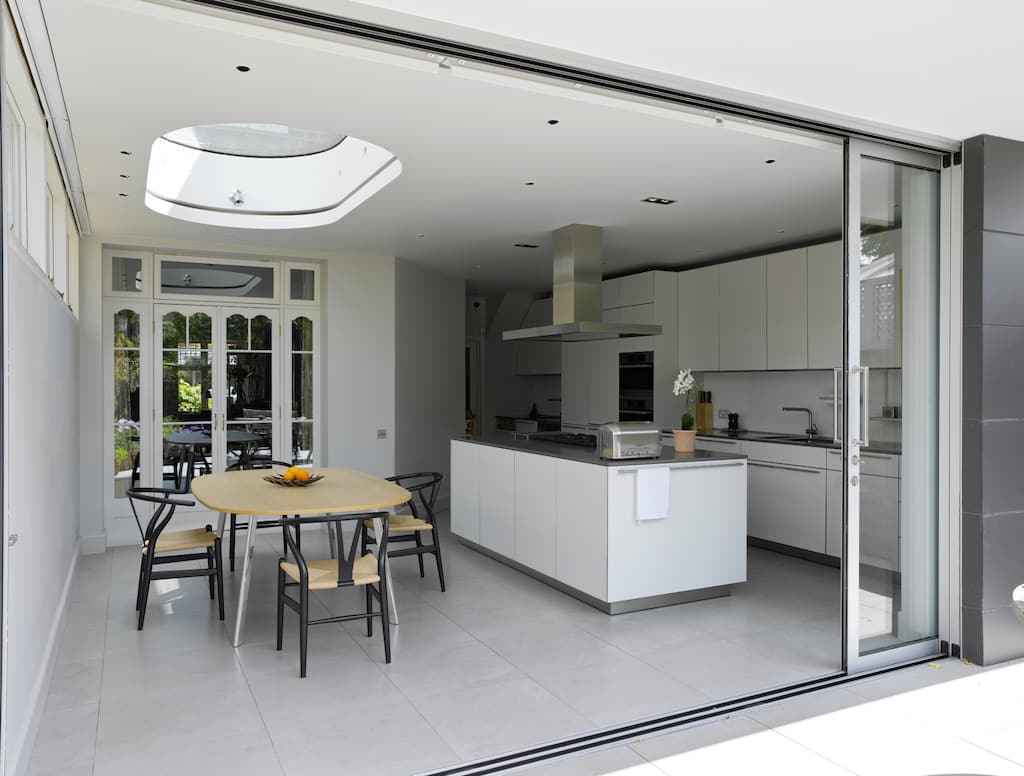
With your builders ‘ involvement, the sliding door can be installed so the panels slide and disappear into the walls. The obvious advantage is that only a minimal amount of door is visible when fully opened, just enough to hold the door to slide it open. You can also have a pocket sliding door with an open-corner configuration and no visible corner post.
Doors sliding into the wall cavity are arguably the only doors that will achieve a bigger clear opening than a bifold because doors are not visible. However, you do need the cavity wall space to allow for the door width and depth, so this is only really possible with new builds or new extensions.
Doors that move completely out of the way as alternatives to bifolding doors
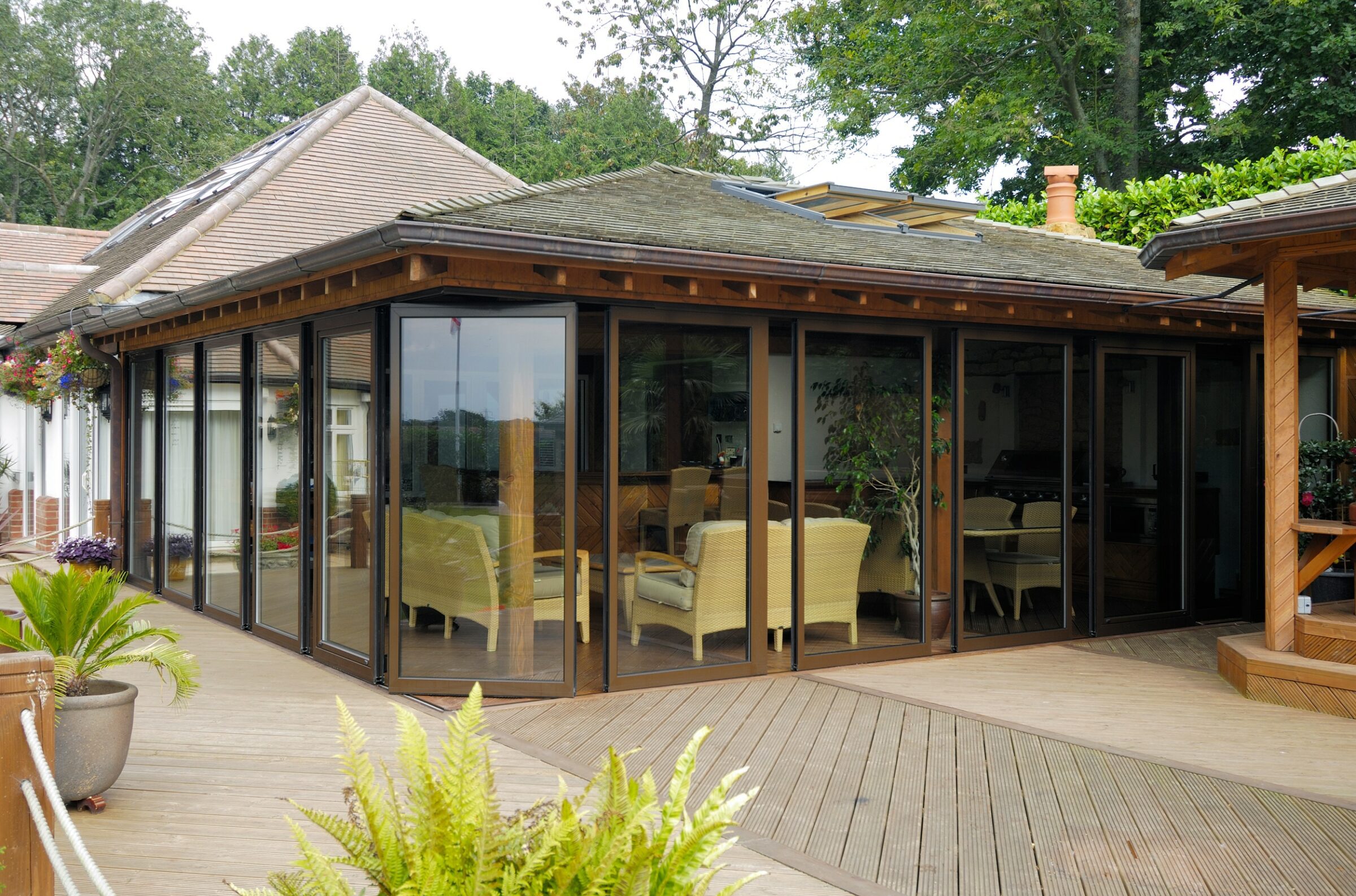
Sunparadise makes the Monoslide 80 which gives you a complete clear opening. These doors are different, unique, distinctive and worth checking out. The panels moving independently like slide-and stack-doors on a unique track and head arrangement; the panels go along an additional track and stack inside the room, outside on the wall or even out of sight in a cupboard. Another benefit is using these doors is you can use them for an open corner style of extension.
ID Systems is a specialist installer of these doors and other brands of slide-and-stack doors.
Tilt and turn door and window for something altogether different
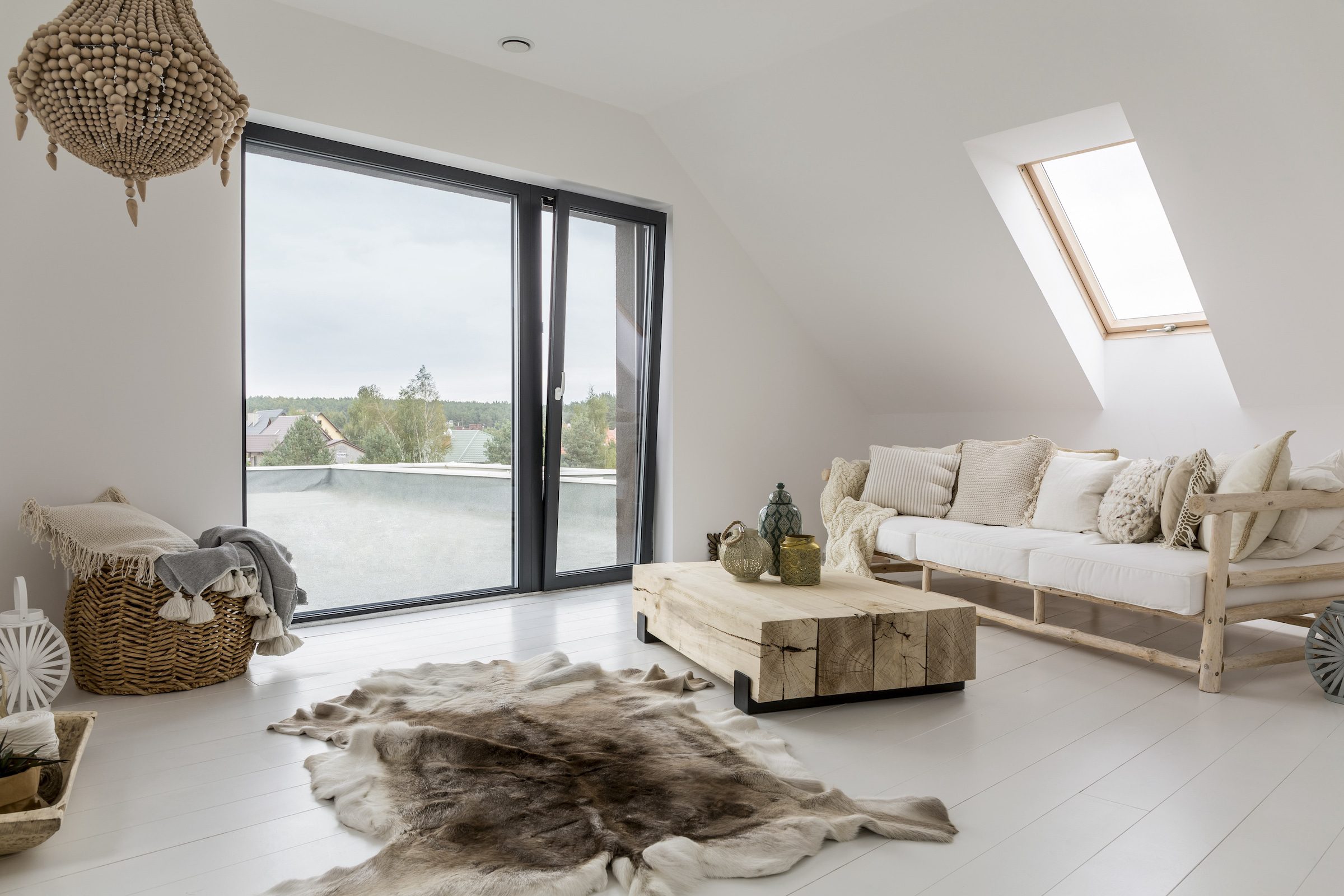
Doors and windows in the tilt-and-turn design provide an altogether different product solution for bifolding doors. Not every design opening will suit these, but tilt-and-turn windows come in larger sizes than regular windows and even up to the height of a door.
These windows tilt back for ventilation by rotating the handle. Turn the handle the other way, and the entire window swings in just like a door. They’ve got compromises but could work well, such as leading out to a flat roof or providing more secure ventilation without having to open a door.
Need help in choosing?
If you are still undecided in which type of doors to choose, we can help and advise you with brand options and suitable installers in your area.











